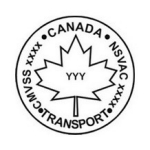Seat Belt Regulation (83-163) under the Motor Vehicle Act requires that drivers ensure all children in their vehicle are properly secured in a child seat until the child reaches:
- nine (9) years of age;
- 36 kilograms (79 lbs) in weight; or
- 145 centimetres (57 inches) in height
When these criteria have been met by the child, the driver will no longer be required to ensure that the child is occupying and properly secured in a child restraint system. A seat belt only is required for the child at that time.
The regulation protects children who have outgrown their car seats but are still too small to be properly protected by a seat belt alone.
The regulation is supported by the New Brunswick Medical Society, Child Safety Link, the Canadian Pediatric Society and the National Occupant Restraint Program Task Force of the Canadian Council of Motor Transport Administrators.
Research indicates that the use of appropriate child passenger restraints reduces the risk of serious injury by 40 to 60 percent.
In a collision, a child restrained with only a seatbelt and not in a booster seat is 3.5 times more likely to suffer serious injuries, and 4 times more likely to suffer a head injury.

